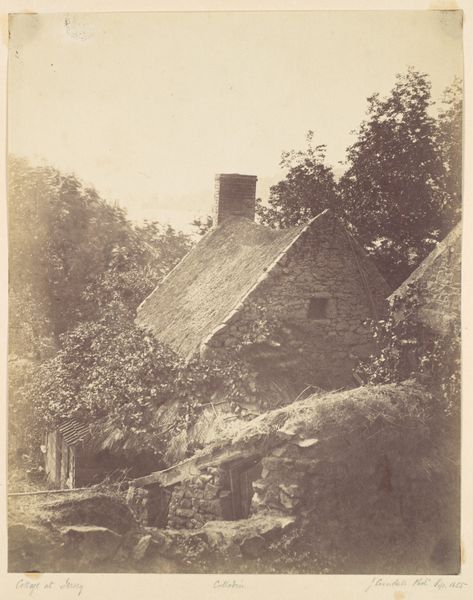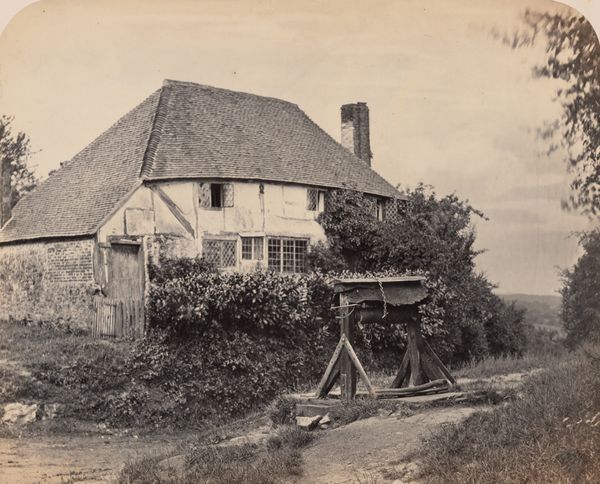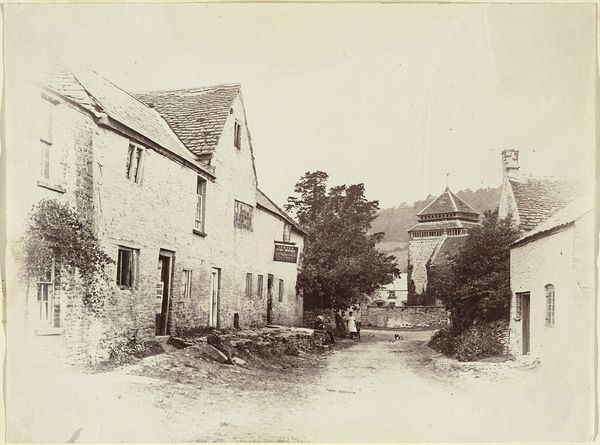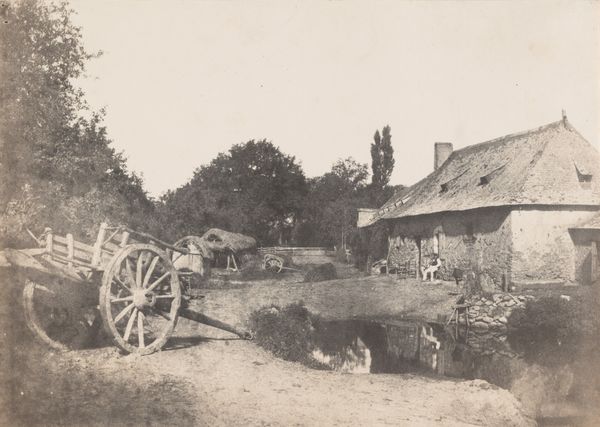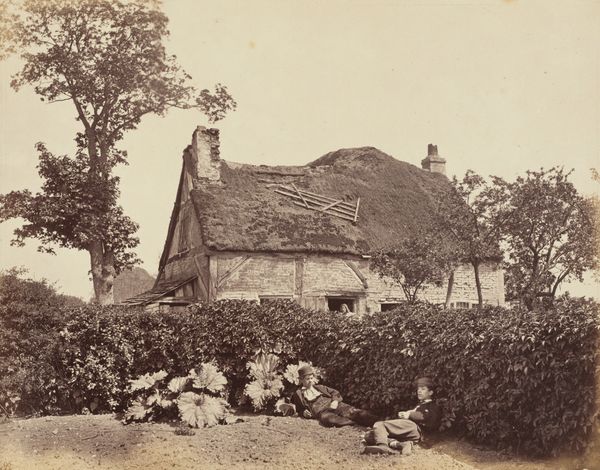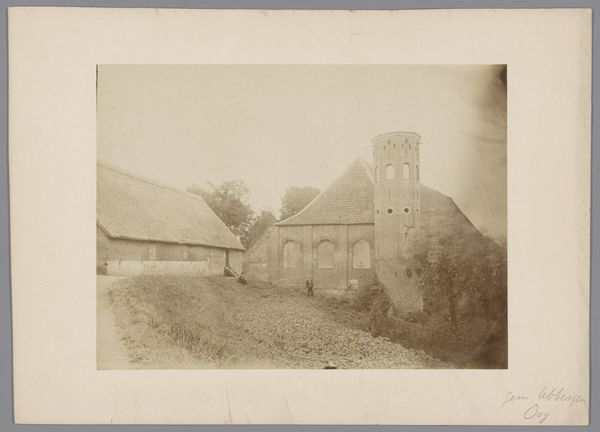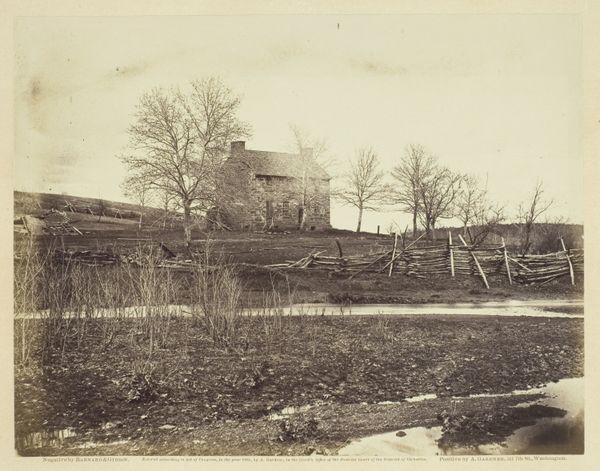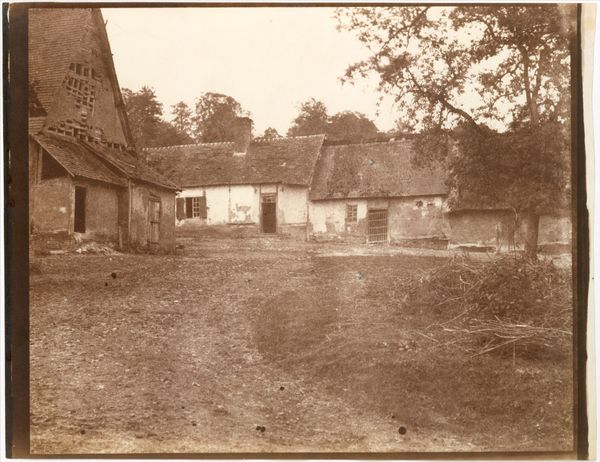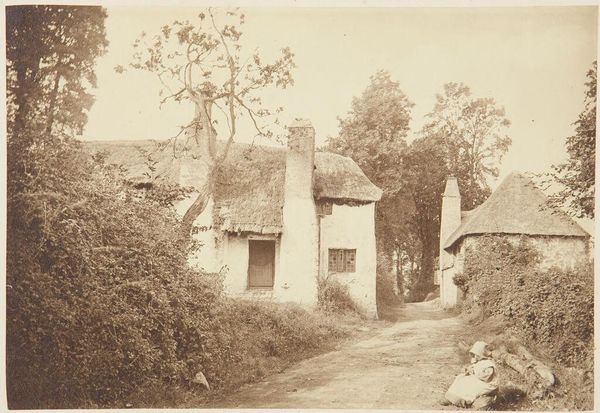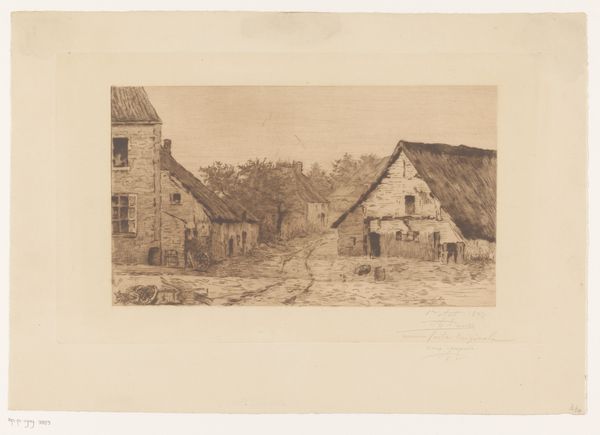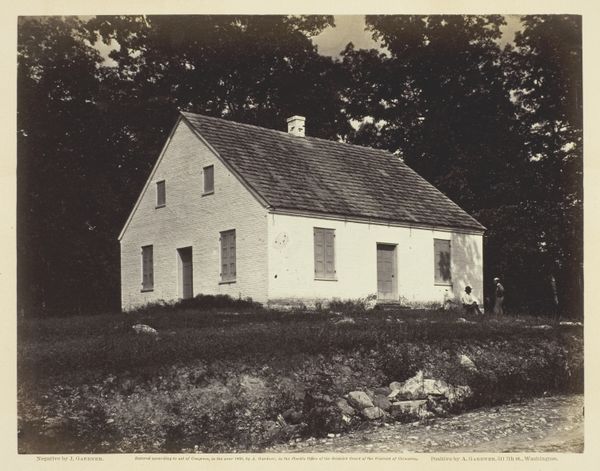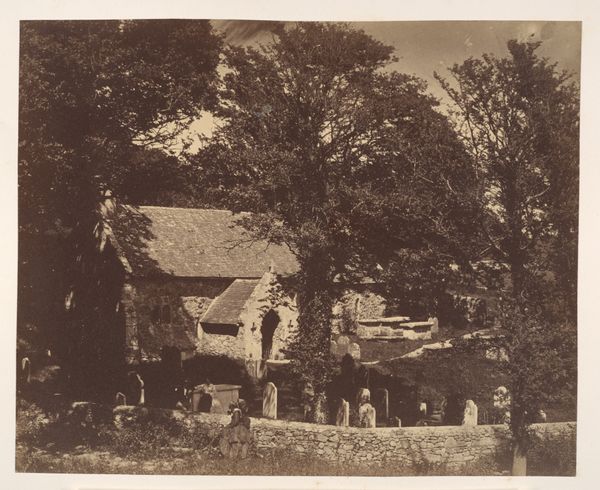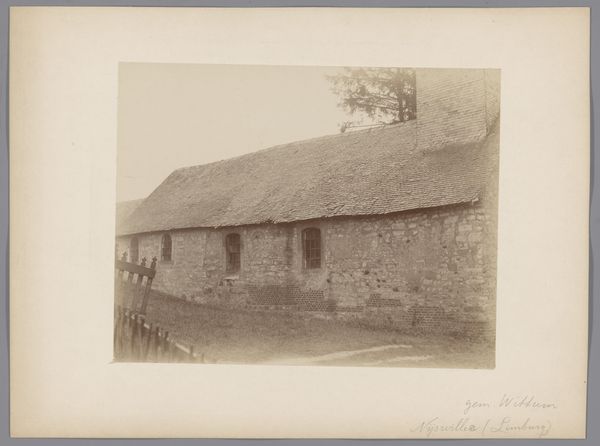
plein-air, photography, albumen-print
#
plein-air
#
landscape
#
historic architecture
#
photography
#
hudson-river-school
#
watercolor
#
albumen-print
#
realism
Dimensions: image/sheet: 27.6 × 22.6 cm (10 7/8 × 8 7/8 in.) mount: 57.1 × 45.3 cm (22 1/2 × 17 13/16 in.)
Copyright: National Gallery of Art: CC0 1.0
Curator: Let's delve into this image titled "Farm Yard, Prestbury near Cheltenham" by Baynham Jones Jr., dating back to around 1855. It’s an albumen print. What’s your immediate reaction? Editor: A certain quietude. A muted color palette evokes nostalgia. There's an old-world charm embedded in the architectural features. It is reminiscent of pastoral landscape paintings. Curator: Yes, and understanding the materiality of albumen print is key here. Think of the labour-intensive process! Each print requires coating paper with egg whites before being exposed to light using a negative. It transformed photographic reproducibility into something almost painterly. Editor: The symbolism is strong. The thatched roof, the worn wooden fences, the wheelbarrow, the slow-moving stream: they all speak of an enduring connection to the land, a kind of pre-industrial idyll perhaps, even as industrialization transforms life elsewhere. Curator: Indeed. This kind of vernacular architecture represents a way of life dependent on local materials and craftsmanship. Consider the contrast to, say, factory-produced elements. It’s an embodied form of knowledge being captured, before mass-production overshadows it. Editor: And those symbols tap into a deep cultural memory. The farm represents sustenance, stability, and the cyclical nature of life, from planting to harvest. It suggests both the comfort and toil of the agricultural experience. Curator: I find myself considering how photographs such as this contributed to constructing ideas about the countryside and labor at this moment in history. Photography was beginning to capture the lives of everyday people, including those engaged in rural economies, but often romanticizing them. Editor: And I think there’s a power in these recurring archetypes; the barn, the brook, which transcend individual realities. It gives the artwork a collective memory, a certain mythical status that contributes to the enduring legacy of rural scenes in popular culture. Curator: Very interesting insights, exploring both material production and enduring symbolic significance. Editor: Precisely. Considering it’s an early photograph rather than a landscape painting helps us to look differently at how cultural myths become interwoven into both materials and images.
Comments
No comments
Be the first to comment and join the conversation on the ultimate creative platform.
